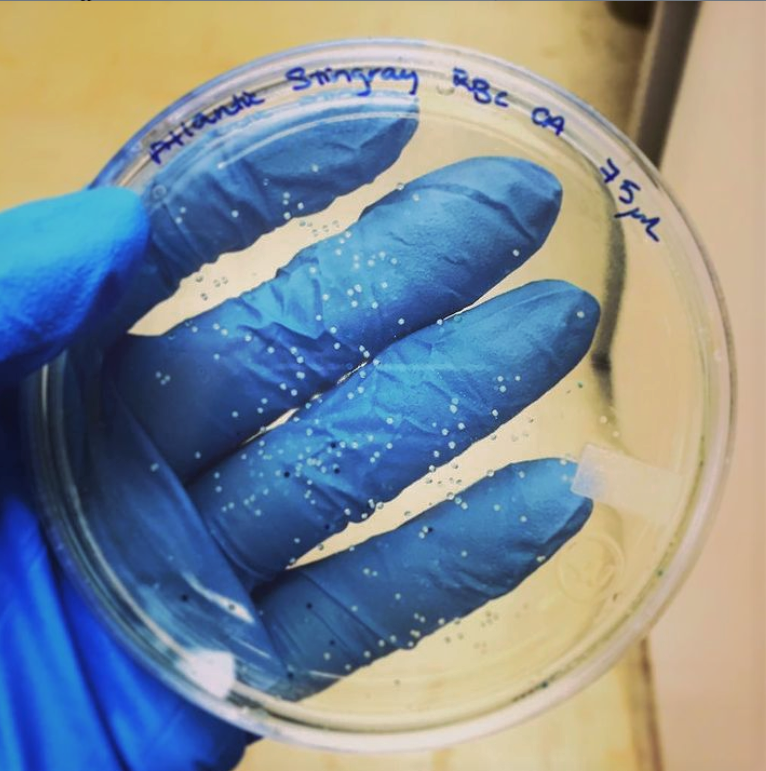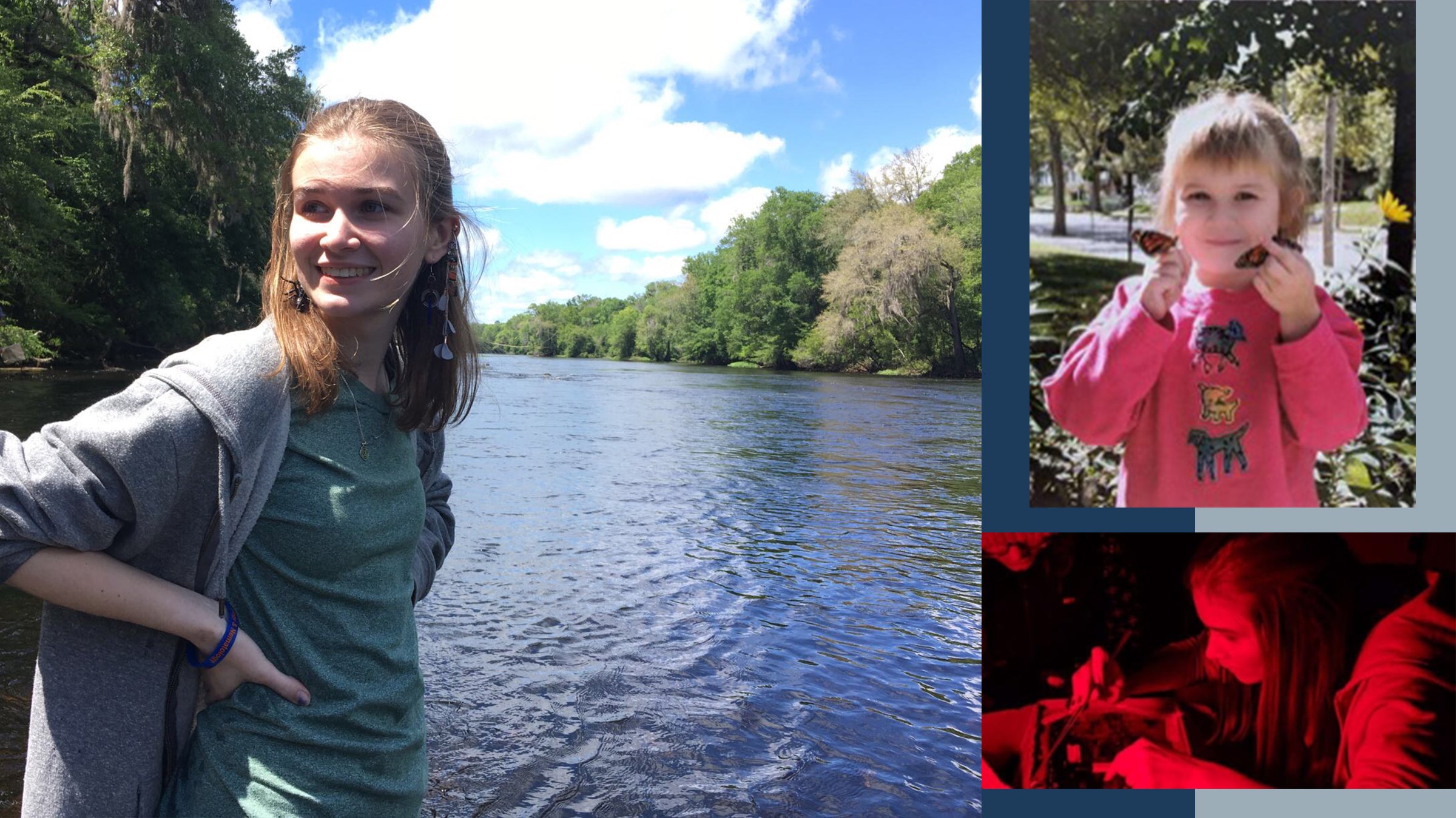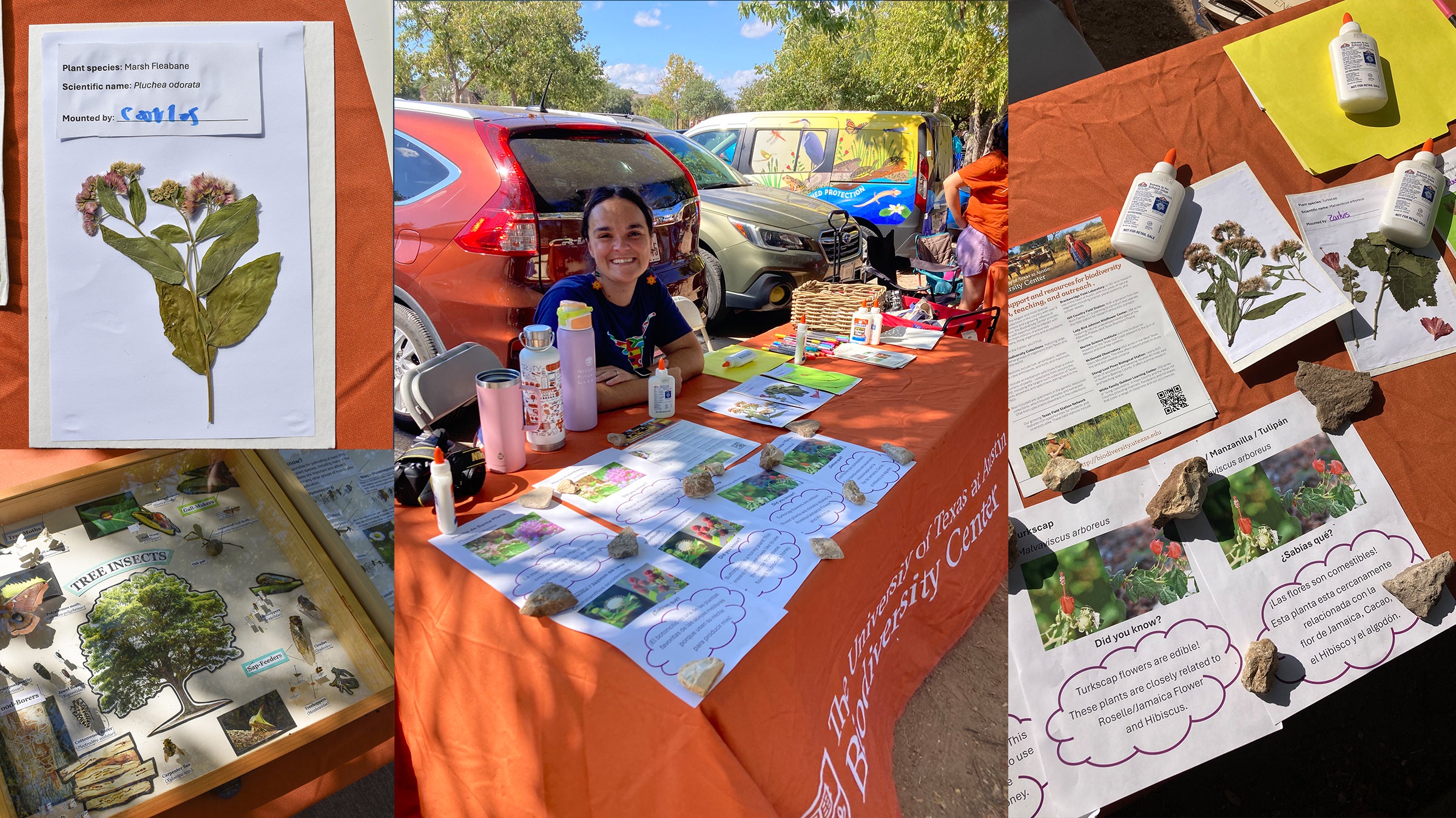
Left: Angelina with a red drum. (Sciaenops ocellatus). Right: Angelina sampling a juvenile red drum.
The Stengl-Wyer Endowment supports year-long fellowships for doctoral candidates pursuing dissertation research in the area of Diversity of life and organisms in their natural environments. Recipients will receive a 12-month stipend of $34,000, full tuition and fees, staff health insurance, and an allowance of $2,000 to cover research and travel expenses.
The inaugural year of Stengl-Wyer Fellowships of 2020-2021 supports four fellows. Angelina Dichiera is the first of our Q&As with the fellows. In her research, she aims to understand the physiological adaptations fish undergo in the ever-changing environment.
Tell us where you came from before UT, and what you studied then?
I went to the University of North Florida for my Bachelors, where the Biology Department had a flagship program for Coastal Biology. I have always loved marine science, so I was able to balance my workload with fun classes like “Biology of Sharks and Rays” and “Field Studies in Marine Science”. When I started thinking about graduate school, I decided to work in a fisheries ecology lab to see how I liked research. I characterized mercury content of invasive lionfish from different regions in the southeast, so we could make recommendations about eating them. They’re very low in mercury and very tasty so I would highly recommend!

Age 12, holding a largemouth bass (Micropterus salmoides).
What got you interested in studying the physiological adaptations of fish?
I’ve always loved fish – they’re the largest and most diverse group of vertebrates! But I actually didn’t take a physiology class until my very last semester in undergrad. I put it off thinking I would hate it. It was the biggest surprise when I realized how fascinating physiological processes are. Since my undergrad research was more fisheries-based, I looked for a Masters program where I could try my hand at physiology research to see if it was really what I wanted to do. I was very lucky to find Dr. Andrew Esbaugh’s lab, where I had many opportunities to be involved in a diversity of research aims. While I focused on the function of a specific protein, I looked at the impact of body size, salinity, ocean acidification, temperature, and oxygen levels on that protein across many different fish species and in many different tissues. I loved it so much that I switched to a PhD so I could continue my research!
Does Texas present a unique situation, challenge or benefit for your research?
I am located at the Marine Science Institute in Port Aransas, and almost all of the fish I have worked with are local recreationally-fished species. People who fish are some of the most passionate advocates of conservation, so I am uniquely able to talk about science to an audience who really cares about what I do. I study a protein called carbonic anhydrase, and while it’s critically important for so many aspects of physiology, it’s not very glamorous or easy to communicate about. This has challenged me to think holistically about my research aims. More recently, I am making an effort to tie protein-level changes to whole-animal responses so that both my audience and I have a more thorough understanding of the impacts of environmental stress on fishes.
Where do you see your research agenda heading here at UT?
With the Stengl-Wyer graduate fellowship, I am completing my PhD, and broadening my research to better understand the fundamental question that drives my work: how fish breathe underwater. I am currently finishing research on the diversity of carbonic anhydrase proteins across fish. Many fish have duplicates and triplicates of certain proteins, which is true for carbonic anhydrase. I am working to understand how these proteins may have different functions depending on which tissue or which species they are found in. In the spring, I will be finishing the last chapter of my dissertation. I will be taking my fish up to the University of North Texas to learn how to low oxygen exposure impacts cardiac output. I’ve found that fish exposed to low oxygen recruit more protein in their heart – potentially to help increase the amount of oxygen they’re able to get in a stressful environment.




